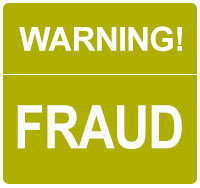Business debt collection scam by Joe Van Hae
Date First Reported: March 2013
Primary Name Associated: Joe Van Hae
Description of Potential Fraud:

Four Ontario lawyers have notified us that they’ve received an email from the purported Joe Van Hae looking to retain them with regards to a breach of a business loan agreement. This is similar to other frauds of this kind we have seen. For a full description of how this fraud works and to see other names attached to it, see our Confirmed Fraud page that deals with business loan frauds.
Here is the email:
From: [email protected] [mailto:[email protected]]
Sent: Tuesday, March 26, 2013 12:13 AM
Subject: RE:Legal service needed
Hello Counsel,
I am inquiring about the possibility of your firm representing me in
the litigation of a loan matter. Debtor: Alfred Odwod: $288,000.00
Amount 80,000 Balance $208,000.00 plus 7.75% annual interest. If you
or your firm can be of any assistance, please get back to me at your
earliest convenience through my personal email address [email protected]
so I can send you related documents.
Yours Truly.
Joe Van Hae
A lawyer who replied got this response:
Thank you for your response to my mail, here are more information’s regarding this matter. Below is the information of the borrower. I am presently in the UK and can reached on 447045718865.
BORROWER NAME: Alfred Odwod who relocated to the states few years ago.
The Borrower is someone I have known for 12 years and we have done business in the past without any issues. He is into HEAVY DUTY EQUIPMENT RETAILS AND SALES. And he was the one that have introduced me into this very line of business 11yrs ago.
Like I stated in my previous email, Mr. Alfred owes me$508,910.00. And he has only paid me back $85,000 and the balance is still outstanding till this day. I am in constant contact with him and even though he has promised to pay the balance, I think the threat or possibility of litigation would serve as a catalyst to make him pay sooner rather than later.
I am prepared to pay your retainer fee for this service as soon as I get an engagement letter from your firm. I expect this to be a non-litigation collection from the borrower but I am prepared to litigate this matter if he is not ready to pay the balance owed on the loan agreement. Note that this loan is not in dispute
Send me the engagement letter so that we can proceed with this issue with him. I want to also let you know that as an owner of a business, this loan that I gave to Christopher (Who I know very well) has caused considerable strain on my operation capital.Time is of the essence for me now.
Sir, let me know how much your retainer will be for I am ready to retain your firm to help me with this very issues of mine.
Please send me your retainer agreement or engagement letter at your earliest convenience.
I am open to either an hourly or contingency fee basis. Please advice which works better for you.
Best Regards,
Joe Van Hae
How to handle a real or suspected fraud
If you have been targeted by any of these frauds, please forward any of the emails and supporting documents that you have received to [email protected].
If you suspect you are acting on a matter that might be a fraud, call LAWPRO at 1-800-410-1013 (416-598-5899). We will talk you through the common fraud scenarios we are seeing and help you spot red flags that may indicate you are being duped. This will help you ask appropriate questions of your client to determine if the matter is legitimate or not. If the matter you are acting on turns out to be a fraud and there is a potential claim, we will work with you to prevent the fraud and minimize potential claims costs.
If you have been successfully duped, please immediately notify LAWPRO as there may be a claim against you.
For more immediate updates on fraud and claims prevention, subscribe to the email or RSS feed updates from LAWPRO’s AvoidAClaim blog.
Fraud Fact Sheet More fraud prevention information and resources are available on the practicePRO Fraud page, including the Fraud Fact Sheet, a handy reference for lawyers and law firm staff that describes the common frauds and the red flags that can help identify them.

Leave a Reply